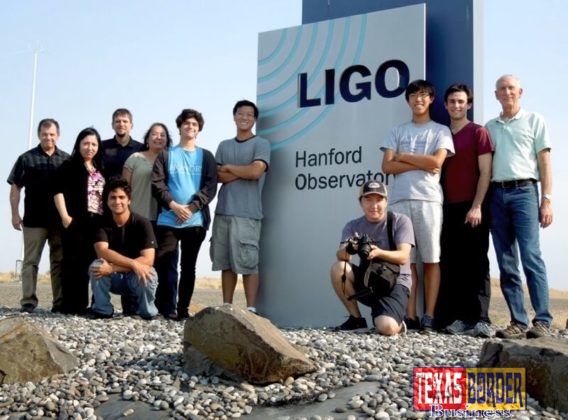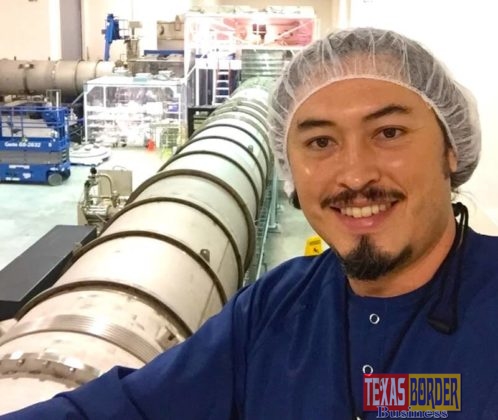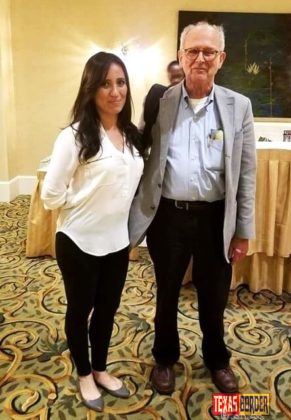UTRGV gravitational waves scientists part of LIGO team
Texas Border Business
RIO GRANDE VALLEY, TEXAS – OCT. 3, 2017 – The Nobel Prize in Physics 2017 has been awarded to the three scientists who founded the Laser Interferometer Gravitational-Wave Observatory (LIGO) project, a massive, international physics experiment and observatory built to detect cosmic gravitational waves and to develop technologies for such observation.
The scientists – Rainer Weiss, 85, professor at the Massachusetts Institute of Technology, and Kip Thorne, 77, and Barry Barish, 81, both of the California Institute of Technology – head a multinational team of some 1,200 scientists responsible for the first detection of gravitational waves, which originated in the merger of two Black Holes. The observed ripples in the fabric of spacetime were detected by LIGO and confirmed Albert Einstein’s theory of relativity.
Scientists with UTRGV’s Center for Gravitational Wave Astronomy (CGWA) have been directly involved with the LIGO team and the first and subsequent detections of gravitational waves.
CGWA has been a member of the LIGO Scientific Collaboration since 1998. It has the largest group of gravitational-wave researchers in Texas and one of the largest in the United States involved in LIGO Scientific Collaboration global research effort. Its scientists and student researchers are key contributors to the first direct detection of gravitational waves.
Dr. Mario Díaz, CGWA director, called the Nobel Prize in Physics for the founders and leaders of LIGO “a well-deserved award.”
“It is also a testimony to the joint effort of the many scientists who worked together to make the discovery of gravitational waves a reality,” Diaz said.
UTRGV scientists and students for almost 20 years have made significant and varied contributions to the LIGO team:
- In the development of core technologies and instrumentation used by the LIGO detectors.
- In the installation and commissioning of hardware for the detectors at the Hanford and Livingston sites.
- In the modeling of noise sources that can contaminate the data.
- In the development of new algorithms that analyze the data in search of gravitational-wave signals.
- And in follow-up searches with optical telescopes that try to catch the optical counterpart of these events.
CGWA and UTRGV faculty members involved in the LIGO Scientific Collaboration are professors Teviet Creighton, Mario Diaz, Soma Mukherjee, Volker Quetschke, Malik Rakhmanov and Joseph Romano, and graduate students Karla Ramirez, Robert Stone, Darkhan Tuyenbayev, Wenhui Wang and former graduate student Dr. Guillermo Valdes, now a Louisiana State University scientist working at the at the LIGO Laboratory in Livingston.
Dr. Parwinder Grewal, dean of the UTRGV College of Sciences, sent an email Tuesday morning to Diaz about the Nobel Prize for gravitational waves research and detection.
“Wow! How appropriate that the Nobel Prize in Physics went to Gravitational Wave detection scientists. Congratulations to the leaders of LIGO and all its members – including your group – which has contributed to this milestone in history.
“I am proud that UTRGV is so closely associated with this discovery, and now, with this Nobel Prize,” Grewal said.
MORE ABOUT UTRGV’S CGWA SCIENTISTS
- CGWA Professor Malik Rakhmanov has been with the LIGO project since 1995, and spent many years at the detector sites installing hardware and commissioning the detectors. He started the experimental research lab focused on optical and interferometric research when he joined the CGWA in 2008.
- CGWA Professor Volker Quetschke started working on gravitational-wave detector hardware in 2000 and has been a member of the CGWA since 2009. His efforts include research on the laser system, especially its stabilization, the electro-optic modulators, as well as the interface between the in-air laser system with the in-vacuum interferometer.
- Drs. Rakhmanov and Quetschke, together with LIGO Hanford senior scientist and CGWA Adjunct Professor Richard Savage, have led an active and very fruitful collaboration between the CGWA and the LIGO Hanford Observatory for more than seven years. Students have worked at the site, directly contributing to the success of LIGO. These students include Sergio Cantu, Pablo Daveloza, Gregorio Tellez, Andrea Tellez, postdoctoral researcher Dr. Oliver Puncken and current doctoral students Darkhan Tuyenbayev and Guillermo Valdes, who are active LSC fellows participating in commissioning and detector characterization. Doctoral student Karla Ramirez will be joining them in the summer.
- The algorithm that first detected the event is based on work done by CGWA Professors Soumya Mohanty and Rakhmanov in collaboration with Professors Sergey Klimenko and Guenakh Mitselmakher from the University of Florida.
- Former members of the CGWA, Manuela Campanelli, Carlos Lousto and Yosef Zlochower (currently at RIT), were instrumental in the numerical modeling of the merger of a pair of black holes, producing waveforms that match that of the detected event.
- CGWA scientists Mario Diaz, Matt Benacquista, Tania Peñuela and doctoral student Martin Beroiz led an international collaboration that operated optical telescopes in the southern hemisphere to perform a follow-up search in the hours immediately after the event, looking for possible visible but faint counterparts in the sky. The group from the UTRGV CGWA was one of only 20 groups of astronomers throughout the world who performed this follow-up.
- CGWA Professor Teviet Creighton has also participated actively in developing and reviewing algorithms searching for gravitational waves associated with neutron stars.
- CGWA Professor Joseph Romano, who with Professor Mario Diaz is a co-founder of the CGWA, has led efforts in developing techniques to detect the gravitational waves of cosmological origin associated with the Big Bang.
- CGWA Professor Soma Mukherjee, chair of the UTRGV Department of Physics, has contributed to several aspects of detector noise analysis and searches for gravitational-wave signals from supernovae.
- Graduate students Sean Morriss, Marc Normandin and Robert Stone, CGWA Research Assistant Professor Joey Shapiro Key, and former CGWA Research Assistant Professor Cristina Torres, have been involved in LIGO data analysis and detector characterization.
ABOUT LIGO
LIGO is funded by NSF and operated by Caltech and MIT, which conceived and built the project. Financial support for the Advanced LIGO project was led by NSF with Germany (Max Planck Society), the U.K. (Science and Technology Facilities Council) and Australia (Australian Research Council) making significant commitments and contributions to the project.
More than 1,200 scientists from around the world, including those at UTRGV, participate in the effort through the LIGO Scientific Collaboration, which includes the GEO Collaboration.

















